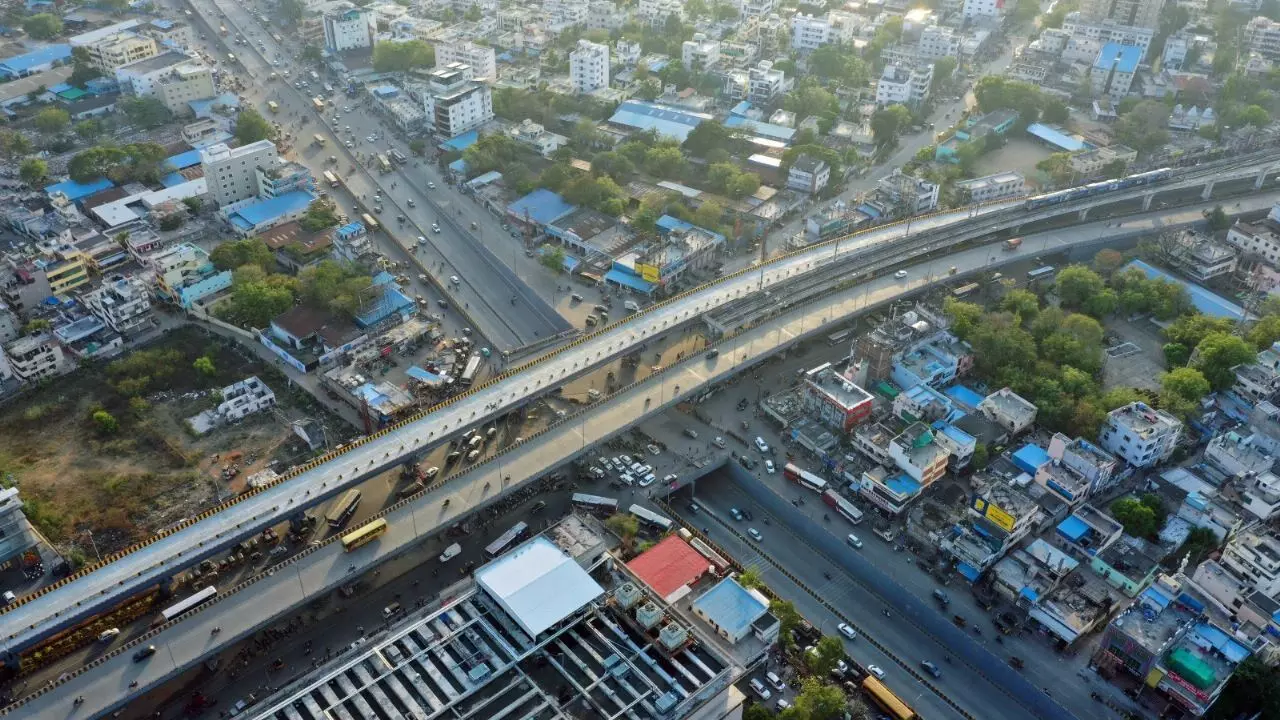Flyovers or no flyovers: Experts differ over measures to solve traffic congestion in Hyderabad
While flyovers may temporarily ease traffic congestion, they can lead to increased vehicle usage, perpetuating the cycle of congestion
By Anoushka Caroline Williams
Hyderabad: Flyovers are often seen as a solution to streamline traffic flow. However, experts argue that they provide only short-term relief and can ultimately contribute to traffic congestion by encouraging the use of private vehicles.
Short-Term Relief vs. Long-Term Congestion
While flyovers may temporarily ease traffic congestion, they can lead to increased vehicle usage, perpetuating the cycle of congestion.
According to Dr. Narasimha Reddy Donthi, a public policy expert, "Flyovers might ease the traffic congestion for a limited period but do not offer a lasting solution."
He explains that flyovers often create bottlenecks and can complicate traffic at their entrances and exits.
Naresh, an author of driving manuals known as TopDriverIndia on X (formerly known as Twitter), suggests a more radical approach. "The holistic approach to this is to copy countries like Singapore: We must limit the number of vehicles that can be sold per year in metros. A quota should be established on the number of vehicles that can be registered per year in Metro RTA’s. And the government should add more public transport buses to offset this. Unfortunately, this is very difficult to do in a country like India, where we have democracy and everybody has a right to own a vehicle… We need a draconian rule at the central government level to achieve this, which may not happen in our lifetime."
Case Studies of Urban Transformation
Cities around the world are rethinking the use of flyovers. For example, the Cheonggyecheon River Linear Park Project in Seoul involved demolishing a 5.6 km elevated highway built over the Cheonggyecheon stream. This project transformed a congested flyover into a 6 km greenway, attracting over 60,000 visitors daily, improving air quality, and increasing bus ridership by 15%.
In Mumbai, the Matunga Garden-under-Flyover Project turned the space under a flyover into a public garden. This initiative, started by residents, has inspired the creation of more gardens under other flyovers in the city, improving community spaces and reducing misuse of these areas.
Public Transport and Sustainable Alternatives
Experts advocate for enhancing public transport as a more cost-effective and sustainable solution to traffic congestion.
According to the Central Road Research Institute (CRRI), "Constructing flyovers and widening roads have not been effective in reducing traffic congestion and have often led to an increase in personal vehicles on the roads."
Bus Rapid Transit (BRT) systems, which feature dedicated lanes for buses, offer a high-capacity public transport option. BRT can carry between 10,000-30,000 people per hour per direction, significantly more than a two-lane flyover, and can be implemented at a fraction of the cost.
A local driving instructor, Ravi Kumar, adds, "Investing in efficient public transport is crucial. Not only does it reduce congestion, but it also provides a reliable and cost-effective alternative to private vehicles."
Designing for the Future
Dr. Donthi emphasizes that flyovers are often designed without adequate consideration of traffic characteristics and local needs. He notes that most flyovers are designed based on geography rather than traffic volume and characteristics, which can result in poorly designed infrastructure that complicates local traffic. "The lack of public consultation and evaluation processes for flyover projects has led to their ineffectiveness in addressing traffic issues," says Dr. Donthi.
“While flyovers might offer a temporary solution to traffic congestion, they often exacerbate the problem in the long run by encouraging private vehicle use. Sustainable urban planning should focus on improving public transport and creating spaces that promote green modes of transport. Transforming existing flyovers into public spaces, as seen in Seoul and Mumbai, can contribute to reducing pollution, improving safety, and enhancing the quality of life for urban residents” adds Dr Donthi.